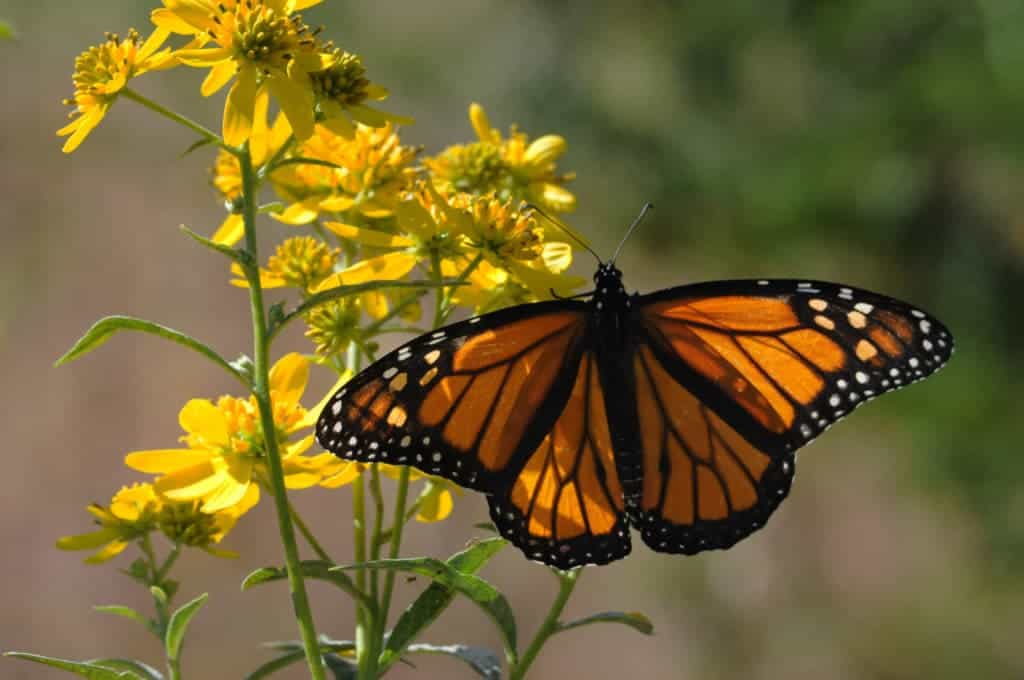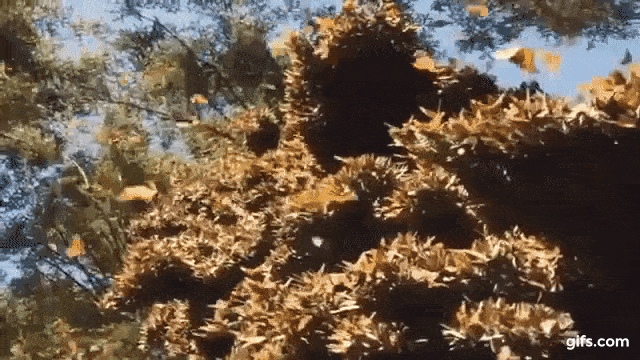The end is nigh for the monarch butterfly.

Tradition dictates that every year, the American West Coast dons a fluttery, black-and-orange coat with the migration of the monarch butterflies (Danaus plexippus). But in recent decades, that coat has become thinner and frailer, an indication that something isn’t quite right with the insects. A decline in their numbers first became evident around the 1980s, and by the 1990s, nature lovers started to report a visible reduction in the swarms of butterflies migrating south for winter.
Now, a team of researchers from the Washington State University warns that we may be witnessing the last migrations of the monarchs, as the species’ numbers have declined to an all-time low.
A sight to behold
Every autumn, the insects make their way from all across the continent to sunnier California, where they spend the winter basking in the sun. Eastern populations of the monarch are known to hop the border into Mexico instead. After the cold months pass, the butterflies make their way back to the US and Canada, sup on spring flowers, lay their eggs on milkweed — and then do it all over again when winter looms.
No matter where they travel to, however, the journey takes D. plexippus over thousands of kilometers of the US countryside, attracting nature lovers everywhere. The butterflies gather in huge numbers and literally cover entire sections of woodland in a riot of black-and-orange wings. The migration is so strikingly beautiful that the event was often caught on film for nature documentaries.

Sadly, such footage is the only place you can enjoy the sight today. Back in the 1990s, nature lovers attending the butterflies’ migration were starting to notice that the insects were dwindling in number. This begged the question: what’s happening to the monarchs?
To find out, a team of researchers led by Cheryl Schultz from Washington State University, Vancouver, worked with communities along the coast of California to pool records on butterfly numbers gathered by volunteers from across the state since the 1980s. Because the different groups involved in the migration take various paths — some even overwinter in forest groves west of the Rockies, for example — the team also drew on data gathered by the Xerces Society for Invertebrate Conservation, which recruited volunteers to do a yearly count of the “monarch populations overwintering along the California coast” since 1997.
Royally screwed
They fed this data into a mathematical model designed to dampen the data’s noise — minor fluctuations in numbers caused by the natural year-to-year changes in the pockets of butterflies — to get a good look at the long-term trends of the overall species. Their results paint a very grim future for the monarch: the team reports that their numbers have declined to less than 5% what they were in the mid-1980s, pushing the monarch dangerously close to extinction.
“In the 1980s, 10 million monarchs spent the winter in coastal California,” says lead researcher Cheryl Schultz from Washington State University Vancouver. “Today there are barely 300,000.”
“This study doesn’t just show that there are fewer monarchs now than 35 years ago. It also tells us that, if things stay the same, western monarchs probably won’t be around as we know them in another 35 years,” says Schultz.
Because they looked at population numbers alone, the team can’t offer an answer as to why the butterflies are dying off. It’s likely a ‘death by a thousand cuts’ scenario. Habitat loss and a decline of the summer milkweed which they use to reproduce due to shifting climate and land clearing, along with the effects of harmful pesticides, are wrecking havoc on the insects. More research is required to pinpoint the exact cause, but the findings may come in too late to help save the monarch. A report published by conservation non-profit Center for Biological Diversity concluded that “there is a substantial probability that the eastern monarch butterfly population could decline to such low levels that they face extinction. Researchers estimate that there is between 11 percent and 57 percent probability that the monarch migration could collapse [by 2036].”
The findings we’ve covered here today now show that the western populations of the monarch butterflies are in even more dire shape than the eastern populations, the team notes. Significant conservation efforts are needed to help save the species, and they’re needed sooner rather than later. The US Fish and Wildlife Service is monitoring the situation but is yet to list the monarchs as an endangered species.
The paper “Citizen science monitoring demonstrates dramatic declines of monarch butterflies in western North America” was published in the journal Biological Conservation.


